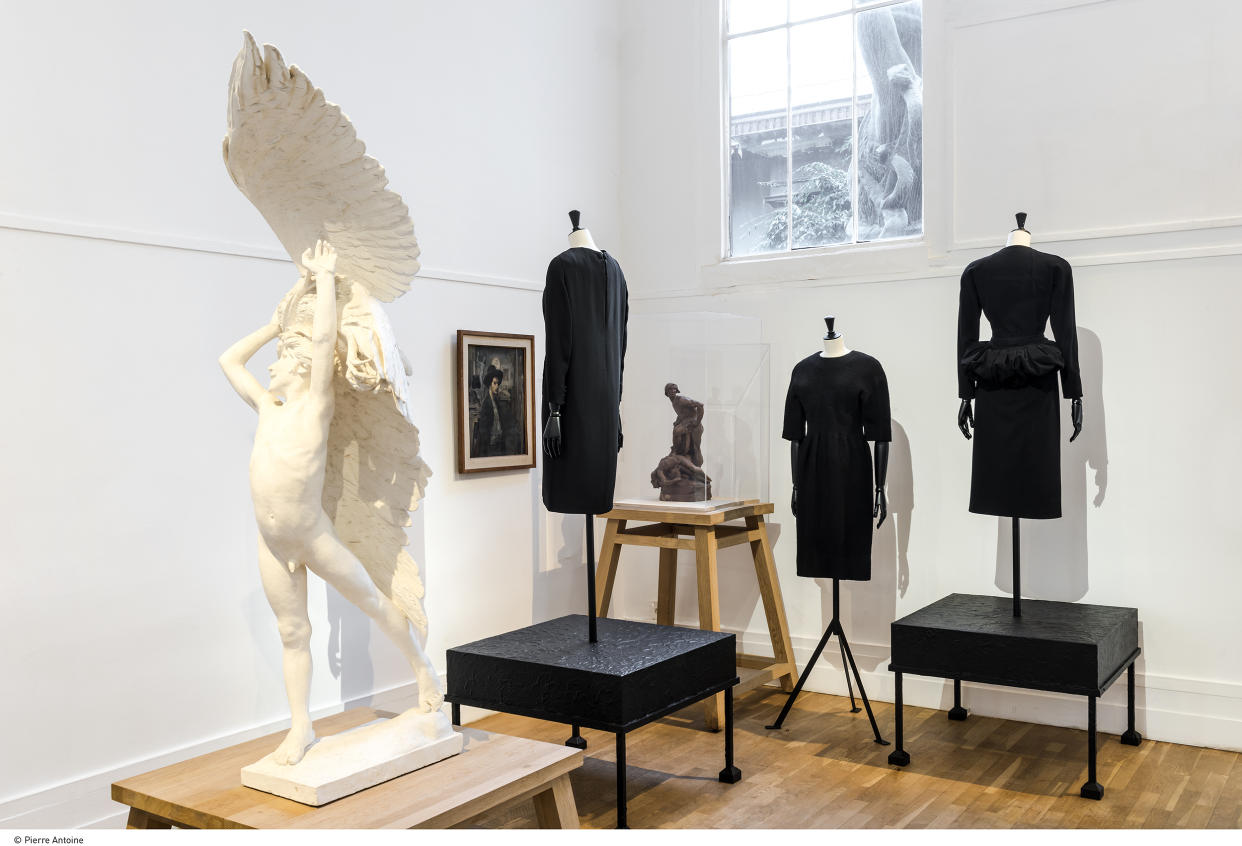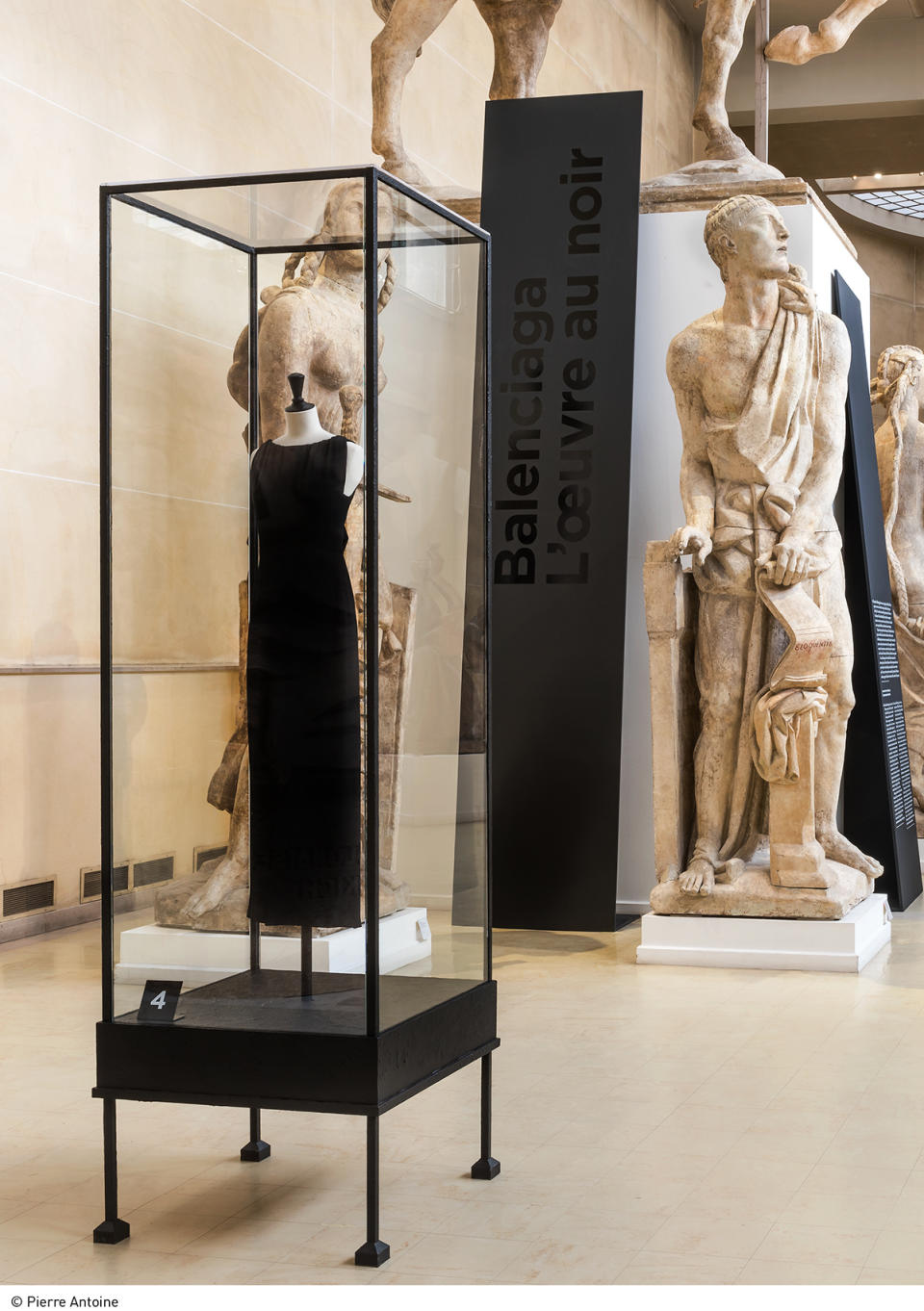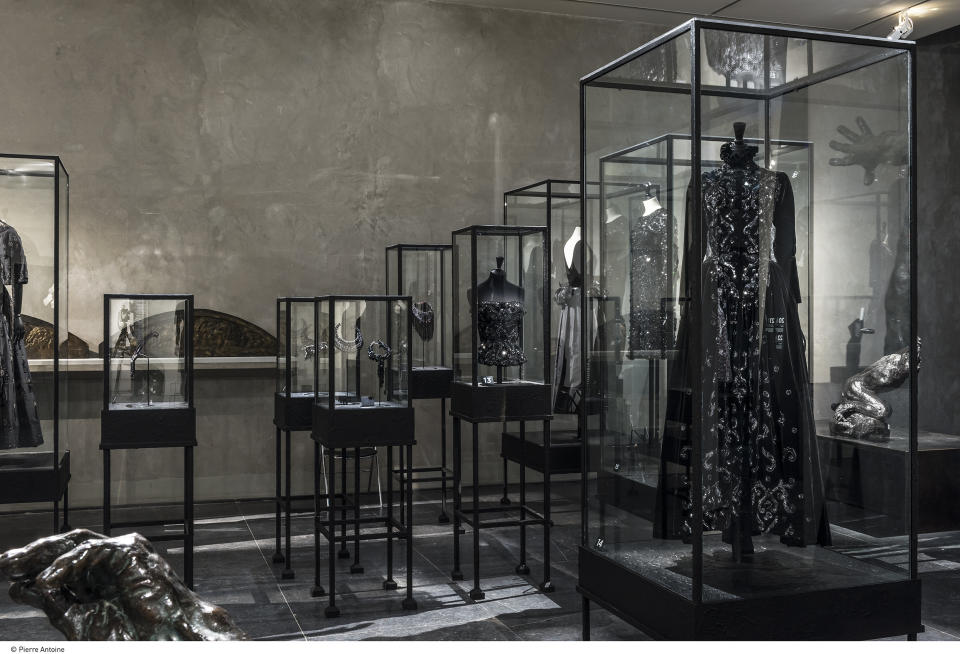Two Museum Exhibitions Celebrate Balenciaga

“Clothes were his religion,” French couturier Christian Dior said of his Spanish confrere Cristóbal Balenciaga. That is evident in the poetic exhibition “Balenciaga: Working in Black” at the Musée Bourdelle in Paris through July 16-one of two major museum shows this year celebrating the 100th anniversary of the fabled Parisian fashion brand. The second, “Balenciaga: Shaping Fashion,” opens at the Victoria & Albert Museum in London in late May.

Artfully displayed amid the bronzes and marbles of early 20th-century French sculptor Antoine Bourdelle are 70 of Balenciaga’s masterpieces, all in black, sourced from the archives of the Palais Galliera fashion museum. Among the many showstoppers are a sexy cowl-back silk crepe cocktail dress, from 1958; an A-line bias-cut décolleté cocktail dress cinched with a shell pink sash and veiled in sheer black gauze, from 1967; and the famous origami dress, folded sharply in four corners like a creased box and suspended from the shoulders by diamond-bracelet-like straps, also from 1967.
Sprinkled throughout the show are Balenciaga’s sketches, at times dashed off on hotel stationery; snapshots of fit models wearing the originals in the studio; and quirky chapeaux that were designed as harmonious extensions of the clothing.

The choice of black as the exhibition’s curatorial device makes sense. Black is deeply Spanish. It shows off Balenciaga’s clean lines and sculptural proportions in the silhouettes he invented: the barrel line in 1947, the balloon in 1950, the semi-fitted suit in 1951, the tunic dress in 1955, and the sack dress in 1957. And, most important, Balenciaga preferred to work in black, seeing it not as a neutral but a complex palette in varied textures such chiffon, lace, taffeta, organza, and gazar-a fabric developed for Balenciaga by Swiss textile designer Gustav Zumsteg in 1958. Even the toiles, made of ecru muslin at every other couture house, were black chez Balenciaga. At times, Balenciaga’s black could be “so black that it hits you like a blow,” Harper’s Bazaar wrote in 1938, one year after his first show in Paris. “Thick Spanish black, almost velvety, a night without stars, which makes the ordinary black seem almost grey.”

Current Balenciaga designer Demna Gvasalia understands this. For his Fall-Winter 2017 women’s wear show in Paris earlier this month, he dove deep into the house archives and produced nine modern takes on iconic Balenciaga looks, including two in black: a voluminous tulle gown pulled in as poufs at bust, waist, hip and knee by black ribbon, and a black velvet column tied off at the waist with an enormous taffeta bow. The homage was a smart and timely business move. But Gvasalia’s deference does seem sincere. Above his desk hangs a portrait of Balenciaga. “He watches over me but in a good way,” the Tbilisi-born designer told Women’s Wear Daily. “It’s about respect.”
You Might Also Like


